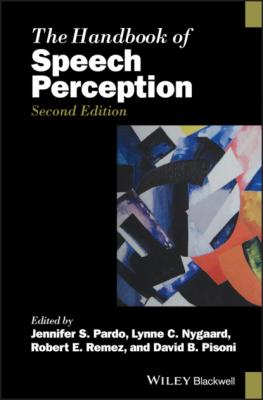ТОП просматриваемых книг сайта:
The Handbook of Speech Perception. Группа авторов
Читать онлайн.Название The Handbook of Speech Perception
Год выпуска 0
isbn 9781119184102
Автор произведения Группа авторов
Жанр Языкознание
Издательство John Wiley & Sons Limited
14 Index
List of Tables
1 Chapter 3Table 3.1 Semantic‐field encodings for four words.Table 3.2 Context‐word encodings of four words.Table 3.3 Cosine similarities between four words.
2 Chapter 6Table 6.1 Percentage of correct identification by support vector machine mode...
3 Chapter 8Table 8.1 Summary of empirical questions discussed in this chapter
4 Chapter 12Table 12.1 Acoustic measures for American English idiomatic and literal utter...Table 12.2 Acoustic measures for sarcastic and literal utterances produced by...
5 Chapter 13Table 13.1 Overall accuracy in a free classification task with 20 male talker...Table 13.2 Observed speech‐processing benefits for multidialectal listeners.Table 13.3 Observed speech‐processing costs for multidialectal listeners.
6 Chapter 19Table 19.1 Demographic and audiological characteristics of participants in Ty...Table 19.2 Factor loadings from the principal components analysis of A‐only, ...
7 Chapter 25Table 25.1 Classification of degrees of hearing loss (HL), based on three‐fre...Table 25.2 Purposes of speech‐perception tests (Source: Adapted from Mendel &...Table 25.3 Domains of executive function and cognitive control.Table 25.4 Major domains of neuropsychological functioning.
List of Illustrations
1 Chapter 1Figure 1.1 This sequence of tones presented to listeners by Bregman and Camp...Figure 1.2 A comparison of natural and sinewave versions of the sentence “Th...Figure 1.3 A comparison of the short‐term spectrum of natural speech (top); ...
2 Chapter 3Figure 3.1 Illustration of the ear showing the early stages of the ascending...Figure 3.2 A power spectrum representing an instantaneous spectrogram (left)...Figure 3.3 Firing‐rate distributions in response to the vowel [ɛ] in head [h...Figure 3.4 Waveform (top), spectrogram (middle), and simulated LSR auditory ...Figure 3.5 Tonotopic map. HG = Heschl’s gyrus; STG = superior temporal gyrus...Figure 3.6 A map of cortical areas involved in the auditory representation o...Figure 3.7 Feature‐based representations in the human STG. (a) shows left‐he...Figure 3.8 Feature‐based representations in the human sensorimotor cortex. (...Figure 3.9 The human brain reinstates missing auditory representations. (a) ...
3 Chapter 4Figure 4.1 Perturbation (solid line) and average compensation (dots) of firs...Figure 4.2 Average F1 (circles) and F2 (triangles) frequencies estimates acr...
4 Chapter 5Figure 5.1 Several properties of the functional architecture of auditory wor...
5 Chapter 6Figure 6.1 Vowel formant measurements from Peterson

